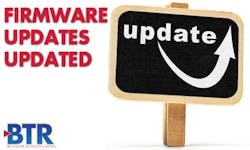The legacy approach to firmware updates is increasingly challenged by the complexity of today’s networks and devices. In many cases, the upgrades are vendor-specific. That’s a problematic approach because most operators employ DOCSIS equipment from two or even three vendors. Keeping all the firmware updated for each version of multiple vendors’ gear is a reach.
In other cases – such as in Mediacom’s, which recently upgraded to a platform from Intraway – upgrades are handled by third-party software platforms. Mediacom, according to Vice President of Technology J.R. Walden, found that its previous platform was too reactive and labor-intensive. For instance, firmware upgrades made at a particular time bypassed devices that happened to be offline and those bought at retail by the consumer. Those devices were not updated until special steps were taken – if they were. “It was easier to allow devices to linger on the network with older code that had security or performance issues,” he said.
Walden said the percentage of devices with dated software could hit the 10% to 15% level. It is realistic to aim at a universe of end points that are more than 99% up to date, he said.
Walden said the Intraway platform sets rules and essentially automates the entire process. In addition to more reliably updating firmware for traditional tasks, the platform supports new applications and services such as WiFi and telephony. Granular control over when and where updates are issued and the complex procedures of safely rolling them out are part of the platforms. In short, proactive packages offload what potentially is a big headache from operators. “MSOs are looking for flexibility and agility,” said Intraway COO Ricardo Simpson.
The basic reasons firmware must be upgraded are the same as they always have been, but that the pace has accelerated radically. It is, in essence, a whole new ballgame. Not paying attention to firmware today is potentially far more costly and disruptive than even a few years ago when video was the primary product.
Observers say proactive and highly automated outside platforms seem to be the wave of the future. There are three main goals: Activating features that were shipped in an inactive state; avoiding conflict between the network and on-premises DOCSIS devices; and ensuring that security is up to date. It is a bit of a self-fulfilling prophesy: As more features are packed into devices, the more likely it is that something goes wrong and a firmware update necessitated, said Sigma SystemsCTO Brian Cappellani.
The bottom line is that firmware upgrades that keep the software current are far more important than when configurations didn’t change as often and a lower percentage of subscribers’ telecommunications assets relied on a single network. “The amount of change in the wide-area network outside the home and [networks] inside the home drives the need for service providers to make sure changes in the gateway [and STB] in the middle is properly configured with the right settings and software,” said Bob Petrovic, the product marketing manager for Incognito’s ACS product line.
The heightened importance of firmware updates means that the manner in which they are done must be upgraded as well. Indeed, it is far more complicated than just sending code through the network to the waiting device. “You’ve got to do it by manufacturer and model ... and have to be able to do it in a controlled way and consider geographical factors,” Cappellani said. “You have to be able to do it for a set of devices during a trial and then push it to the network in a controlled manner.”
Modern platforms sense devices that are coming on the network and employ operator rules in order to handle them appropriately. For instance, Simpson said the platform Intraway deployed for Mediacom can wait until the next service window to upgrade a new device or - if security is threatened or the rationale otherwise calls for faster action - issue and install the update more immediately.
The major takeaway is that firmware upgrades have entered a new realm in which it is vital to deal with faster feature changes to the home network, faster changes to the wider service provider network and greater security concerns. “Given the rates of change in those three areas, it is crtical to have an automated method of doing firmware upgrades,” Petrovic said.
About the Author

